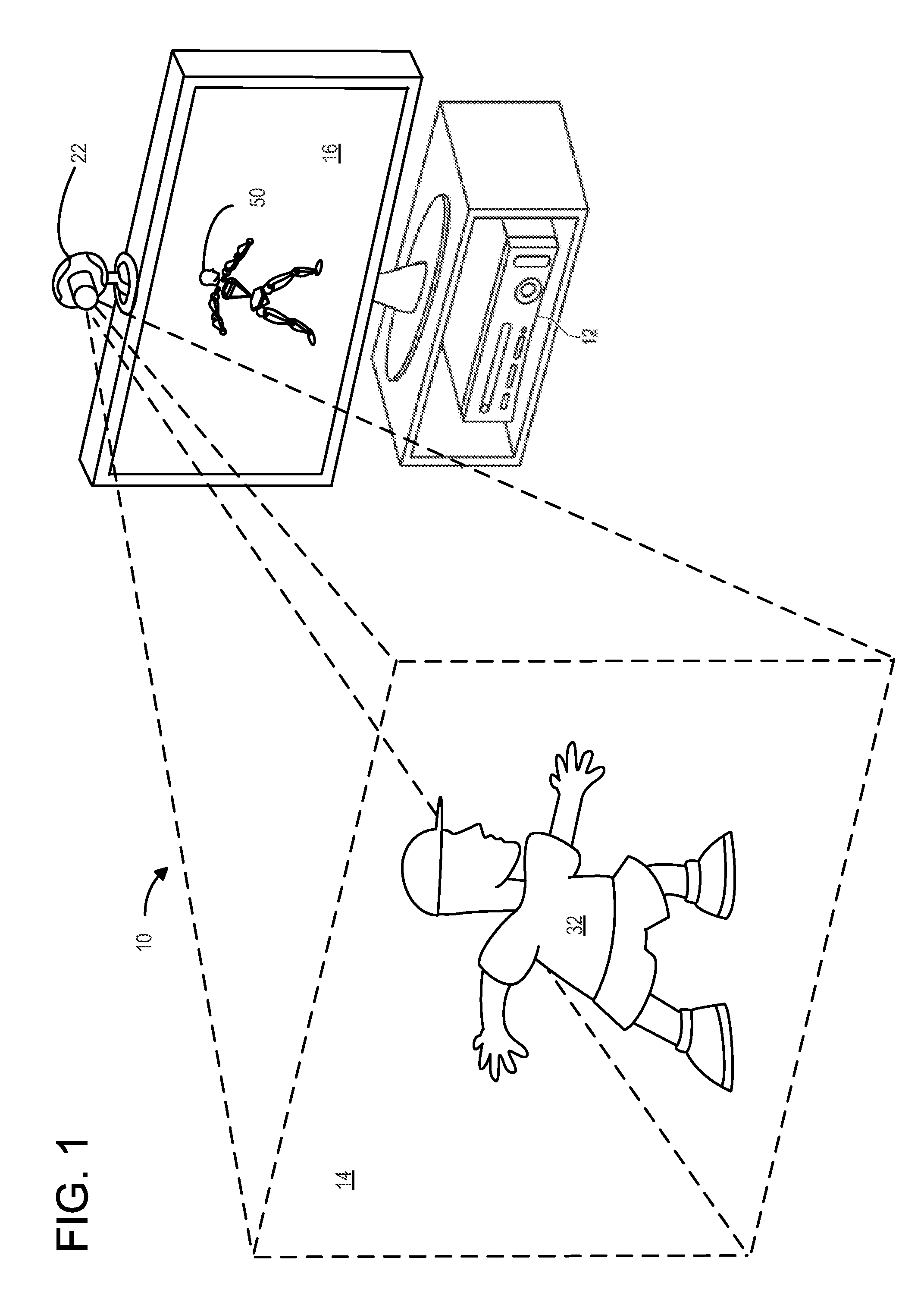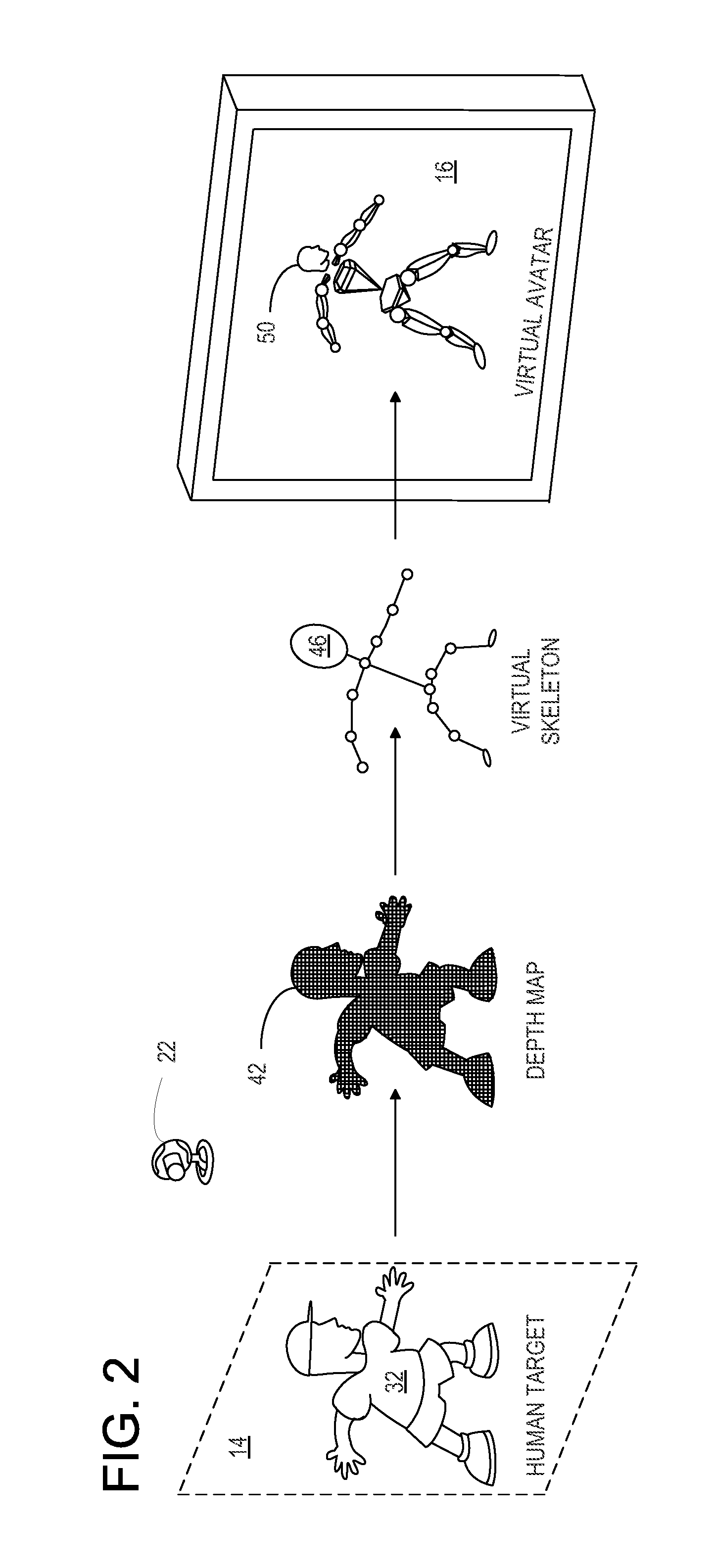Driving simulator control with virtual skeleton
a technology of virtual skeleton and driving simulator, which is applied in the field of driving simulator control with virtual skeleton, can solve the problems that computers have traditionally not been able to use such images
- Summary
- Abstract
- Description
- Claims
- Application Information
AI Technical Summary
Benefits of technology
Problems solved by technology
Method used
Image
Examples
Embodiment Construction
[0011]A depth-image analysis system, such as a 3D-vision gaming system, may include a depth camera capable of observing one or more players. As the depth camera captures images of a player within an observed scene, those images may be interpreted and modeled with one or more virtual skeletons. As described in more detail below, the virtual skeletons may be used as an input for controlling a driving simulator. In other words, a depth camera can observe and model a human that is performing gestures designed to control a driving simulator, and the human target can be modeled with a virtual skeleton that the driving simulator can interpret as different controls. In this way, the human can control the driving simulator with gestures alone, avoiding conventional steering wheel, pedal, joystick, and / or other controllers.
[0012]FIG. 1 shows a nonlimiting example of a depth-image analysis system 10. In particular, FIG. 1 shows a gaming system 12 that may be used to play a variety of different...
PUM
 Login to View More
Login to View More Abstract
Description
Claims
Application Information
 Login to View More
Login to View More - R&D
- Intellectual Property
- Life Sciences
- Materials
- Tech Scout
- Unparalleled Data Quality
- Higher Quality Content
- 60% Fewer Hallucinations
Browse by: Latest US Patents, China's latest patents, Technical Efficacy Thesaurus, Application Domain, Technology Topic, Popular Technical Reports.
© 2025 PatSnap. All rights reserved.Legal|Privacy policy|Modern Slavery Act Transparency Statement|Sitemap|About US| Contact US: help@patsnap.com



